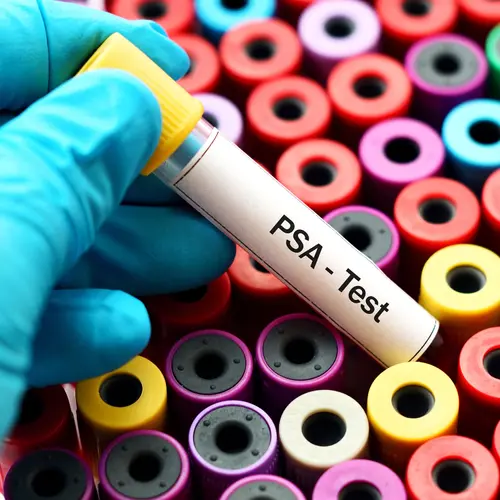A high-intensity focused ultrasound (HIFU) procedure is a technique that uses ultrasound to treat prostate cancer. You may hear your doctor call it "minimally invasive," which means a surgeon doesn't have to cut you open. It is typically used to treat low grade, localized prostate cancer.
This treatment's safety and effectiveness continue to be studied, although most doctors in the US don’t consider it to be a proven first-line treatment for prostate cancer at this time. Who the best candidates are for HIFU is somewhat debated by urologists.
HIFU can be considered:
- As an alternative option to monitoring (no treatment) for patients who have early stage prostate cancer.
- As an alternative to or follow up to radiation or surgery or other failed treatment for tumors that are small and confined to an area (localized) of the prostate.
Your doctor may suggest it either before you've tried other treatments or after radiation therapy that didn't help. It's not used when your cancer has spread to other parts of your body.
How Does HIFU Work?
If you've ever used a magnifying glass to reflect the sun's rays and start a tiny fire or burn a hole into a leaf, you already have an idea of how HIFU works. Instead of light rays, though, HIFU uses sound waves that a doctor points through the wall of your rectum -- the bottom part of your large intestine. They'll direct the waves at your cancer cells.
The sound waves heat up to temperatures as high as 90 C (194 F) and can kill cancer cells in just a few seconds. Doctors use magnetic resonance imaging (MRI) and ultrasound imaging to find out exactly where the tumor is and where to point the sound waves.
What Happens During the Procedure?
It usually takes 1 to 4 hours. Before it starts, you'll get an enema to make sure your bowels are empty. You won't be able to eat or drink anything for 6 hours before the operation.
You will get anesthesia and shouldn't feel any pain during the procedure. The doctor will thread a small tube called a catheter through the head of your penis and into your bladder to catch urine during the procedure.
Your doctor will put an ultrasound probe into your rectum. It's a small instrument like the ones used for prostate biopsies. The probe may have one or two crystals inside. Sound waves from a crystal bounce back to a computer to make a picture of the prostate gland. This will show where to send the sound waves. A crystal sends focused sound waves through the rectal wall and into the gland. An MRI might be used to keep track of the treatment.
After the procedure is done and the anesthesia wears off, you can usually go home. The doctor may leave the catheter in for a week, and you will make an appointment to have it taken out.
What Are the Side Effects?
HIFU has fewer side effects than many other treatments for prostate cancer.
After HIFU, you may have trouble getting an erection, but this usually goes away in time, and medicine can help while you regain this ability. Some men also have trouble peeing or may leak urine between trips to the bathroom.
Other side effects include pain between your testicles and your rectum, which can often be handled with medication. There's also a risk for blood in your urine, a urinary infection, and an infection in your testicles. Always call your doctor right away if you have signs of any of these.

